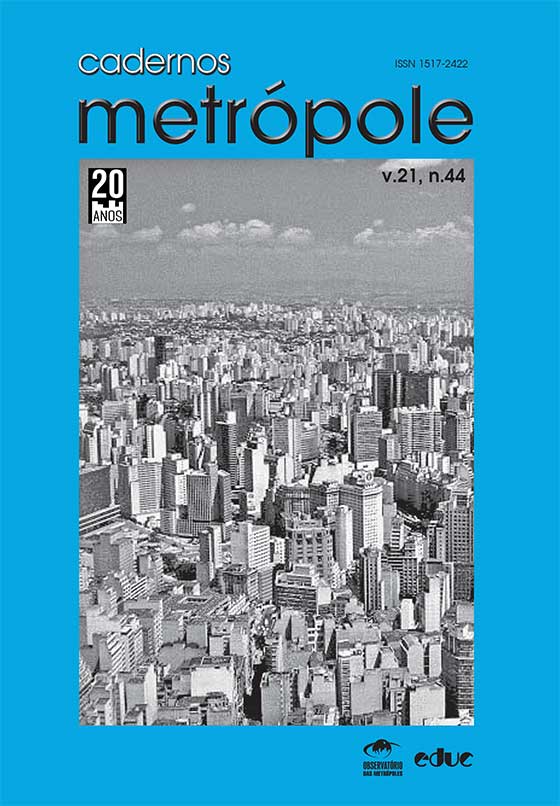Atributos espaciais da desigualdade nas grandes cidades brasileiras: uma relação entre segregação e morfologia
Palabras clave:
desigualdade não monetária, segregação, morfologia, integração, padrões espaciaisResumen
Ao fazer uma análise comparativa entre regiões concentradoras das famílias de menor e maior renda per capita em cinco grandes cidades brasileiras (Goiânia, Fortaleza, Brasília, Belo Horizonte e Curitiba) e suas características morfologias, este artigo busca contribuir para a interpretação de um fator não monetário ligado à produção da desigualdade socioeconômica nas grandes cidades brasileiras. O intuito é analisar a relação entre a morfologia e a localização concentrada dos grupos antípodas de renda familiar per capta. Para isso, utilizam-se, como metodologia de análise, tanto análises georreferenciadas quanto análises morfológicas. Além de apontar padrões espaciais de regiões específicas, destacam-se, como conclusões mais gerais, as relações de regiões morfológicas específicas e a respectiva capacidade de integração e circulação dos grupos nelas residentes.Descargas
Publicado
2019-04-29
Cómo citar
Zechin, P., & de Holanda, F. R. B. (2019). Atributos espaciais da desigualdade nas grandes cidades brasileiras: uma relação entre segregação e morfologia. Cadernos Metrópole, 21(44), 55–78. Recuperado a partir de https://revistas.pucsp.br/index.php/metropole/article/view/2236-9996.2019-4403
Número
Sección
Artigos
Licencia
La revista no puede pagar derechos de autor o distribuir reimpresiones.
El Instrumento Privado de Autorización y Asignación de Derechos de Autor, fechado y firmado por el (los) autor (es), debe transferirse en el paso 4 de la presentación (Transferencia de documentos complementarios). En caso de duda, consulte el Manual de envío del autor.
El contenido del texto es de responsabilidad del autor (es).


